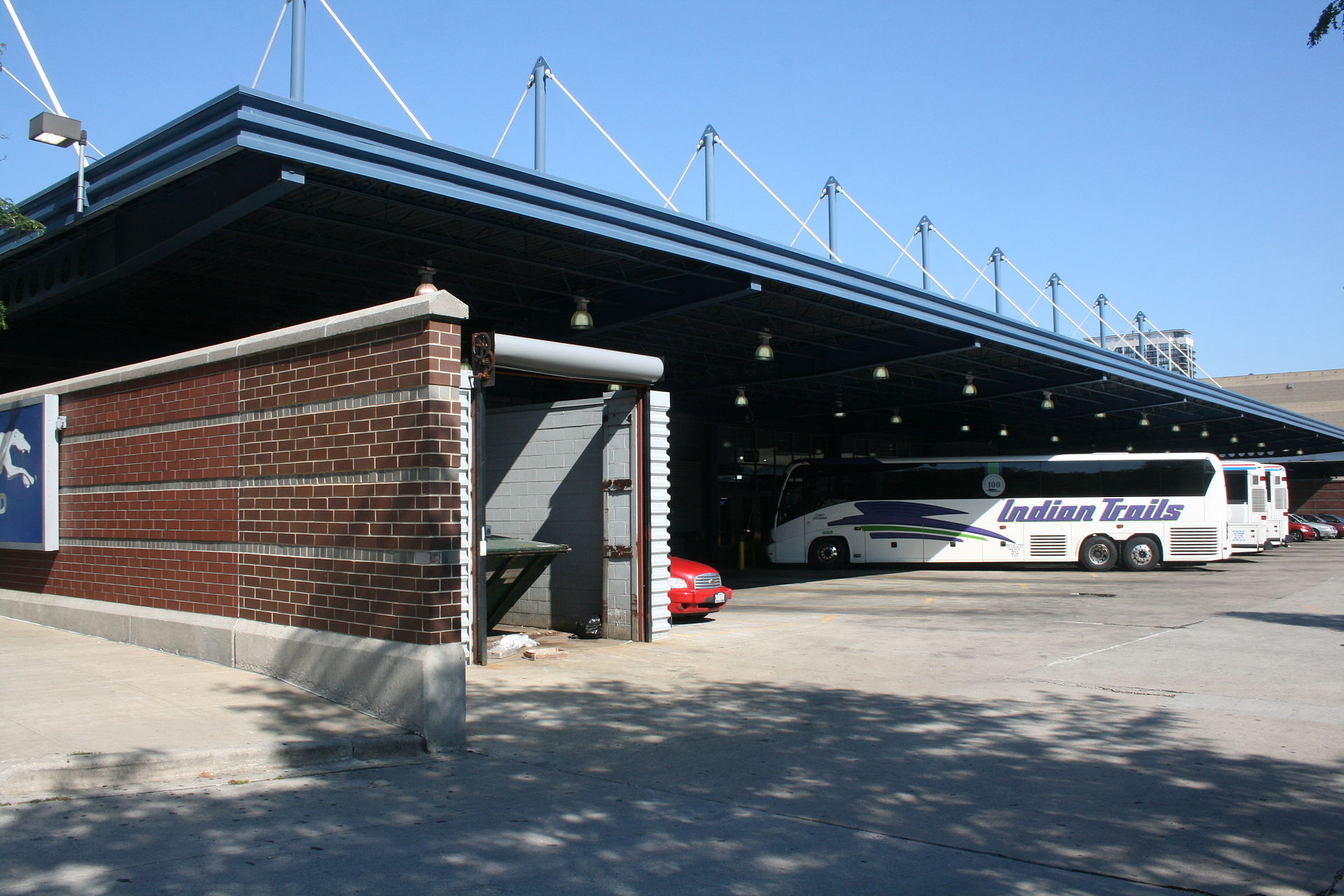Did You Know?
Will intercity buses get you home for the holidays?

This fall, Chicago’s Greyhound station was on the brink of closure. Thankfully, the threat of the bus terminal shutting its doors ended with a temporary reprieve that will keep the downtown terminal operating longer.
However, the ultimate long-term future of an enclosed intercity bus terminal in Chicago remains uncertain.
Across the Midwest, people rely on intercity buses as an affordable connection between home, school, and job opportunities. And during the holiday season, as the tempo of travel increases, the critical link that intercity bus service provides becomes especially evident.
Intercity bus travel connects communities not served by air or rail. These bus services provide connections for rural communities’ access to travel services in large urban areas.
Chicago’s downtown terminal allows passengers to make transfers and board in a safe environment away from the elements.
If the Greyhound station had shut down, passengers would have been pushed to curbside boarding that would have been chaotic, inconvenient, and unsafe.
While the Greyhound Bus Terminal on 630 W Harrison Street may not have the fame or grandeur of O’Hare or Union Station, it’s just as critical as a piece in Chicago’s transportation network.
Since 1989, the station has provided a clean, warm space for travelers to wait for a bus, check bags, or make connections between trips.
Over 500,000 passengers used the station in 2023, making it the busiest intercity bus station in the Midwest.
When FlixBus, owner of Greyhound, announced its lease was to end in October 2024, transportation advocates, elected officials, women’s health providers, and disabled advocates appealed to Chicago and the new owners to find a permanent solution.
As a result of the outcry, Chicago narrowly averted becoming the largest city in the Northern Hemisphere without an intercity bus terminal.
WHY DOES A BUS STATION MATTER?
Without a permanent downtown facility, passengers on the four bus companies that use the terminal — Greyhound, FlixBus, Baron Bus, and Burlington Trailways — will be literally kicked to the curb.
Those who rely on Chicago as a transfer point will be forced to endure multi-hour layovers on the sidewalk, exposed to the elements and without bathroom facilities.
Some bus routes will be shifted to stop at locations far outside downtown, such as Gary, Indiana, adding travel time and inconvenience.
The low-income individuals who make up a large share of intercity bus ridership will be strongly impacted by these changes.
College students will be deprived of a convenient and affordable connection between downtown Chicago and major Midwest universities.
Those attempting to travel to Illinois from neighboring states for reproductive healthcare, particularly from cities and towns without Amtrak service, will find it far more difficult to do so.
WHAT SHOULD BE DONE
Intercity bus stations in the United States have historically been owned and operated by the private bus companies themselves.
This leaves many stations, including Chicago’s, vulnerable to potential closure as land prices increase and Greyhound’s parent company seeks to cut costs.
Compare privately owned bus stations to regional airports, which receive handsome public subsidies for operations and upkeep. Bloomington, Illinois’ airport, for example, sees a comparable amount of passenger traffic to Chicago’s Greyhound terminal.
Funding a transportation facility that’s just as busy as an airport but operates on a smaller land footprint at a fraction of the cost should be a no-brainer.
Recognizing this, St. Louis, Milwaukee, and other large U.S. cities have opened modern publicly-owned bus terminals in recent years.
Chicago could easily follow in the footsteps of peer cities on this front, with the added advantage that the city wouldn’t even have to construct a new station: Greyhound’s existing terminal is centrally located, relatively modern, and has excess capacity.
Regardless of what the exact solution is, it’s clear that an indoor intercity bus terminal is something Chicago can’t afford to lose.
For a thorough overview of the threat faced by Chicago’s Greyhound Station, watch this video presentation by the High Speed Rail Association and Better Streets Chicago.
Blog post by Andrew Rugar, a student at Grinnell College, and W. Robert Schultz III.
Image courtesy of Jeramey Jannene, Flickr.
Make a Donation
Your tax-deductible donation supports the important work that Active Trans does throughout the region
